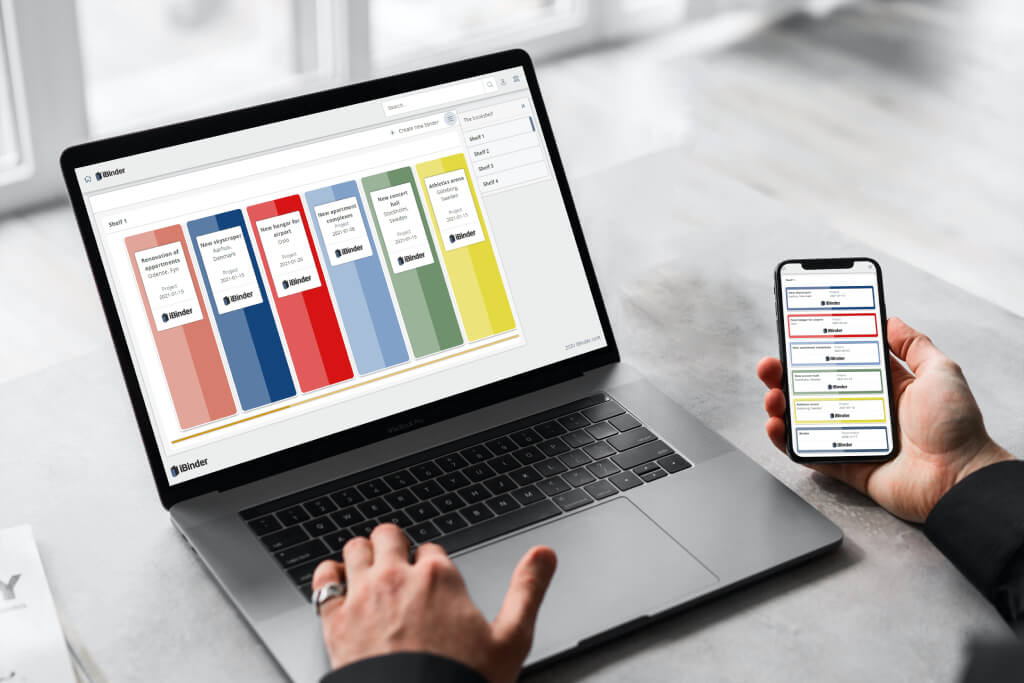From Binders to iBinder: How Construction Document Management Has Evolved
Not long ago, construction project offices were dominated by physical binders, folders, and filing cabinets. Project managers lugged around printed blueprints, signed contracts, and handwritten notes—each version marked manually and stored in separate physical archives.

Today, while most documentation has moved online, the underlying challenge remains: how to manage vast amounts of information clearly, securely, and collaboratively.
The evolution of document management in construction has not been linear. It has transitioned from analogue to digital, and now from fragmented digital systems to integrated platforms that structure and standardise data. Understanding this evolution helps illustrate why modern tools like iBinder are not just upgrades—they are essential infrastructure for contemporary construction management.
The Age of Paper: Physical Control, Manual Chaos
In the pre-digital era, document management was entirely physical. Ring binders were organised by trade or stage of the project, and site offices functioned as mini-libraries. This method offered tactile control, but it came with limitations:
- Difficulties in retrieving older versions of drawings
- High risk of information loss due to damage or misplacement
- Challenges in sharing documents across teams and locations
Decisions were often delayed due to unavailable documentation, and duplicate efforts were common. Collaboration was slow and reactive, and compliance tracking was almost entirely manual.
The Digital Shift: File Servers and Shared Drives
The introduction of email and file-sharing services brought significant improvements—but also new risks. Documents could be copied instantly and shared with large teams, but version control became problematic. Local drives and shared folders were prone to duplication, overwriting, and inconsistent access rights.
While digital files reduced paper use and improved access, they did not inherently improve structure. Many construction firms found themselves in a ‘digital mess’—more files, less clarity. What was needed wasn’t just digitisation, but a systematic way to manage it.
Modern Platforms: From Storage to Structure
The next phase in the evolution of document management is characterised by structured platforms that not only store information but govern it. These systems introduce:
- Centralised, cloud-based repositories
- Defined permissions and role-based access
- Real-time collaboration and commenting
- Automated version control and audit trails
This approach transforms document management from a reactive process to a proactive one. Information becomes searchable, traceable, and actionable—whether in the planning office or on site via mobile access.
What’s Driving the Change?
Several forces are pushing the industry toward better document management:
- Regulatory requirements (e.g., climate declarations, safety documentation)
- ESG reporting and investor scrutiny
- Increasing project complexity and stakeholder diversity
- Demand for faster approvals and digital transparency
Document management is no longer just about archiving; it is foundational to quality control, risk management, and regulatory compliance.
Why a Platform Approach Matters
Construction teams today need more than tools—they need ecosystems. A platform approach unifies not just documents but processes, teams, and compliance into a single environment. It ensures everyone is working from the same set of facts, reduces disputes, and streamlines communication.
The shift from binders to platforms isn’t just a matter of efficiency—it’s about enabling a new level of professionalism, accountability, and strategic control across the lifecycle of the built environment. Those who understand this transformation are better prepared to lead their teams through it.
Sources
- PlanGrid + FMI Report (2018): https://www.autodesk.com/construction/blog/construction-report/
- European Construction Sector Observatory: https://single-market-economy.ec.europa.eu/sectors/construction/observatory_en
- McKinsey Global Institute (2017): https://www.mckinsey.com/industries/engineering-construction-and-building-materials/our-insights
A platform like iBinder supports modern document management by offering:
-
A flexible digital structure that can be adjusted to organisational needs
-
Secure, role-based access for project stakeholders
-
Real-time updates and automatic version tracking
-
Mobile access for teams on the move
-
A scalable, user-friendly environment for the entire project lifecycle

How iBinder works
iBinder is a cloud-based platform that helps the construction and real estate industry better manage information and documentation about their properties.
